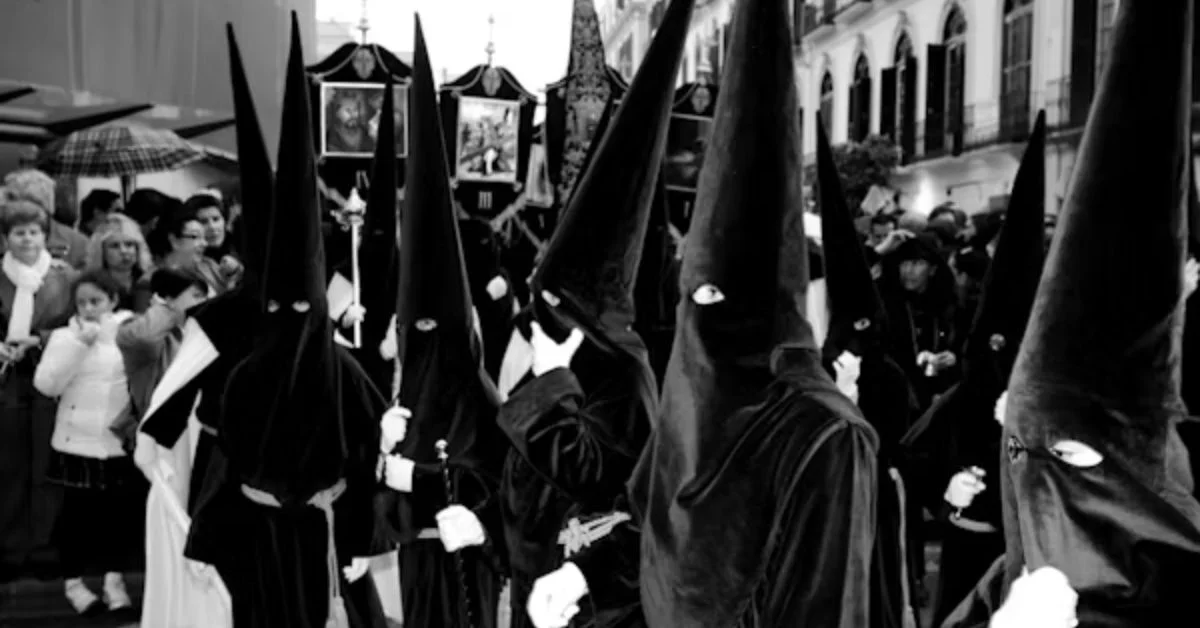
The term “fascisterne” refers to fascists, usually in a historical, political, and ideological context. Fascism, as a movement, emerged in the early 20th century and influenced multiple regions worldwide. “Fascisterne” is often used in Scandinavian languages, such as Danish or Norwegian, to refer to adherents of fascist ideology. While the word directly translates to “the fascists,” it represents far more than a political label—it encompasses an ideology rooted in authoritarianism, nationalism, suppression of opposition, and the pursuit of power through centralized, dictatorial systems.
Origins of Fascism and Fascisterne
Fascism as an ideology took root in post–World War I Europe. The devastation of war left many nations in economic crisis, social unrest, and political instability. Populations frustrated with liberal democracies and fearful of socialism turned to leaders who promised strength, order, and national pride.
The word “fascism” originates from the Italian word “fascio”, meaning a bundle or group, symbolizing unity and strength through collectivism. In Italy, Benito Mussolini led the first official fascist movement, and the individuals who followed his ideology became the earliest fascisterne in practice.
Key Characteristics of Fascisterne
Fascisterne shared certain defining characteristics, regardless of country or leader.
Table: Core Features of Fascisterne
| Feature | Explanation |
|---|---|
| Authoritarianism | Belief in centralized, dictatorial control over society and government. |
| Extreme Nationalism | Promotion of the nation above all, often linked with cultural or ethnic purity. |
| Suppression of Dissent | Opposition parties, free press, and criticism silenced by force or censorship. |
| Militarism | Strong emphasis on military power and readiness for conflict. |
| Cult of Leadership | Glorification of a leader as a near-infallible figure. |
| Anti-Communism | Rejection of socialism and communism as threats to national unity. |
These features defined the actions, beliefs, and organizational style of fascisterne across different nations.
Fascisterne in Italy
Italy was the birthplace of fascism, where Mussolini and his followers—the original fascisterne—rose to power in the early 1920s.
- Blackshirts: Mussolini’s paramilitary groups, known as Blackshirts, intimidated opponents.
- March on Rome: In 1922, fascisterne secured Mussolini’s rise as Italy’s prime minister.
- Policy Changes: Fascisterne reshaped Italy into a one-party state, emphasizing nationalism, aggressive foreign policy, and suppression of opposition.
Italian fascisterne became the model for similar movements worldwide.
Fascisterne in Germany
While Germany’s fascist movement was more commonly identified as Nazism, its adherents—followers of Adolf Hitler—were fascisterne in ideology.
- National Socialism shared fascist roots but incorporated racial ideology as a central tenet.
- German fascisterne pursued Aryan supremacy, anti-Semitism, and territorial expansion.
- They were responsible for some of the darkest atrocities in history, including the Holocaust.
Thus, German fascistrne became synonymous with dictatorship, mass violence, and world war.
Fascisterne in Other Countries
Fascism was not confined to Italy and Germany. Fascistrne appeared in other nations too:
- Spain: Francisco Franco’s movement was rooted in fascist ideology, though blended with monarchy and Catholicism.
- Portugal: António Salazar’s regime shared authoritarian and nationalist traits.
- Japan: Militarist leaders pursued fascist-like ideologies, emphasizing nationalism and expansion.
- Eastern Europe: Fascist parties arose in Hungary, Romania, and Croatia, among others.
This spread showed the global appeal of fascist ideology during the interwar period.
The Rise of Fascisterne
The rise of fascistrne was not accidental; it was fueled by specific conditions:
- Economic Collapse – Inflation, unemployment, and poverty created desperation.
- Weak Democracies – Governments were seen as ineffective in solving crises.
- Fear of Communism – Fascisterne promised protection from socialism and class revolution.
- Appeal of Strong Leaders – Charismatic figures like Mussolini and Hitler inspired loyalty.
- National Humiliation – Nations dissatisfied with treaties (like the Treaty of Versailles) sought revenge.
These conditions combined to make fascistrne appear as saviors to many citizens, despite their destructive paths.
Impacts of Fascisterne on Society
The fascistrne reshaped entire nations, leaving long-lasting effects:
- Political: Elimination of multi-party democracy, replaced by one-party authoritarianism.
- Social: Control over education, culture, and media to enforce ideology.
- Economic: Centralized economies serving state and military goals.
- Cultural: Propaganda glorifying nationalism and suppressing individual freedoms.
- Humanitarian: Widespread human rights violations, including imprisonment, torture, and genocide.
Their impacts were devastating, with legacies still studied today as warnings of authoritarianism.
Decline of Fascisterne
World War II marked the downfall of many fascistrne-led regimes. With the defeat of Italy, Germany, and Japan, fascism lost much of its influence. However:
- Spain and Portugal maintained fascist-style regimes into the 1970s.
- Post-war Europe sought to prevent fascistrne through democratic constitutions and international organizations.
- Fascism was globally condemned, though remnants of ideology lingered underground.
The decline was significant but not absolute.
Fascisterne in the Modern World
Even though classic fascism was defeated, fascisterne-like movements still emerge in modern times. They often:
- Rebrand under new names, such as ultra-nationalism or authoritarian populism.
- Use digital platforms to spread propaganda.
- Capitalize on economic fear, immigration issues, and political discontent.
While not identical to historical fascistrne, modern parallels remind societies to remain vigilant.
Differences Between Fascisterne and Other Ideologies
Table: Comparison
| Aspect | Fascisterne | Communists | Liberals |
|---|---|---|---|
| Power Structure | Dictatorial, centralized authority | Collective ownership, often one-party | Representative democracy |
| Economics | State-directed capitalism | State-controlled socialism | Free-market capitalism |
| Individual Rights | Suppressed, focus on nationalism | Secondary to class struggle | Protected under law |
| Core Value | Nationalism and unity under one leader | Equality of class | Freedom and individual liberty |
This table highlights the unique authoritarian-nationalist nature of fascistrne compared to other ideologies.
Lessons from Fascisterne
The history of fascistrne offers crucial lessons:
- Vigilance Against Extremism – Preventing the conditions that allow authoritarian ideologies to rise.
- Value of Democracy – Protecting freedoms and pluralism.
- Education – Teaching history ensures new generations recognize warning signs.
- Human Rights – Prioritizing rights and dignity for all to prevent repetition of past atrocities.
Future of the Term Fascisterne
Though rooted in history, the term fascistrne remains relevant today. It serves as:
- A reminder of past dangers.
- A descriptor for modern authoritarian groups.
- A tool in academic and political discourse.
The word’s endurance shows its importance in global conversations about power, rights, and governance.
Conclusion
The term fascisterne is more than a linguistic variation—it represents one of the most defining and dangerous ideologies of the 20th century. From Mussolini’s Italy to Hitler’s Germany and beyond, fascistrne shaped nations, waged wars, and committed atrocities that scarred humanity. Though defeated in war, the ideology’s echoes remain, reminding societies to guard against authoritarianism.
By studying fascistrne, we gain not only historical knowledge but also awareness of how fragile democracy and freedom can be if people ignore the warning signs. The legacy of fascistrne is both a historical lesson and a modern responsibility.
FAQs
1. What does “fascistrne” mean?
It is a Scandinavian term meaning “the fascists,” referring to individuals who follow fascist ideology.
2. Where did fascistrne first appear?
The first fascistrne were in Italy under Mussolini’s leadership in the early 1920s.
3. What were the main features of fascistrne?
Authoritarianism, nationalism, militarism, cult of leadership, and suppression of dissent defined their ideology.
4. Are there fascistene movements today?
While classic fascism declined after WWII, modern groups with similar ideas exist under different names.
5. Why is it important to study fascistrne?
Studying fascistrne helps prevent authoritarianism, protect democracy, and ensure historical atrocities are not repeated.
For more information, click here.





